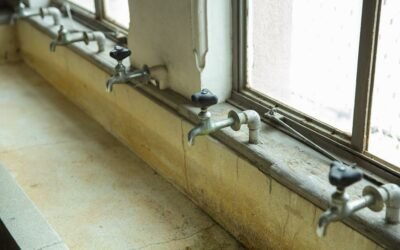Are you wondering if ants are attracted to mold? Look no further! This article will explore the fascinating connection between ants and mold, shedding light on the factors that influence ant behavior.
Discover how the scent of mold plays a role in attracting ants, and learn why moisture is a key factor in ant infestations.
Plus, gain valuable insights on preventing ants in areas prone to mold.
Get ready to uncover the secrets of the ant-mold connection!
Key Takeaways
- Ants and mold have a mutualistic relationship, with mold providing ants with a valuable food source.
- Ant behavior is influenced by species, food availability, environmental conditions, and the presence of other ants.
- Ants are instinctively drawn to the scent of mold, which increases their foraging activity and helps them identify suitable nest sites.
- Moisture plays a crucial role in attracting ants, as it provides hydration, ideal conditions for ant reproduction, and contributes to the growth of mold.
The Ant-Mold Connection
If you're wondering about the relationship between ants and mold, let's explore the connection. Ants and mold have a mutualistic relationship, wherein both parties benefit from each other.
Ants are attracted to mold because it provides them with a valuable food source and aids in the decomposition process. Mold, specifically certain types of fungi, produce a substance called mycelium, which is rich in nutrients. This mycelium acts as a food source for ants, who consume it eagerly.
In return, ants aid in the dispersal of mold spores by carrying them to new locations. This helps mold colonize new areas and ensures its survival. Ants are particularly attracted to mold that grows on decaying organic matter, such as fallen leaves or dead insects. They're able to detect the presence of mold through chemical cues, allowing them to locate and exploit these nutrient-rich sources.
Furthermore, ants also contribute to the growth of mold by providing favorable conditions. They create microhabitats by tunneling through soil or decaying materials, which increases moisture levels and promotes mold growth.
This symbiotic relationship between ants and mold highlights the interconnectedness of organisms in ecosystems and the intricate roles they play in maintaining ecological balance.
Factors Affecting Ant Behavior
As ants are attracted to mold, understanding the factors that affect their behavior is crucial. Ant behavior is influenced by a variety of factors, including their specific species, the availability of food sources, environmental conditions, and the presence of other ants.
Different ant species may exhibit varying behaviors in response to mold. Some species are more attracted to mold due to their natural preferences for decaying matter, while others may show less interest. Additionally, the presence of other food sources, such as sugary substances or protein-rich foods, can impact ant behavior and divert their attention away from mold.
Environmental conditions also play a significant role in ant behavior. Factors such as temperature, humidity, and light levels can affect their foraging patterns and overall activity. Ants are more likely to be active and search for food when conditions are favorable, while adverse conditions may cause them to retreat and limit their explorations.
Furthermore, the presence of other ants can influence their behavior. Ants communicate through chemical signals, known as pheromones, which help them establish trails to food sources. The presence of other ants may attract or repel individuals, depending on the species and the specific pheromones involved.
Ants and the Scent of Mold
Ants are instinctively drawn to the scent of mold, as it serves as a potent attractant for these tiny insects. The scent of mold contains chemical compounds that act as a signal for ants, leading them to investigate and potentially establish colonies near the source.
Here are four intriguing facts about ants and the scent of mold:
- Chemical communication: Ants use chemical signals, called pheromones, to communicate with each other. The scent of mold contains volatile organic compounds (VOCs) that ants can detect and interpret as a potential food source or a suitable nesting site.
- Foraging behavior: Ants have a keen ability to detect and locate food sources. When they encounter the scent of mold, they perceive it as a potential food resource. This can lead to an increased foraging activity in the area, as ants communicate the presence of mold to their nestmates using pheromones.
- Nest site selection: Ants are constantly searching for suitable locations to establish their colonies. The scent of mold can act as a cue for ants to identify areas with high moisture levels, which are often ideal for nest construction and survival.
- Mold cultivation: Certain ant species, such as leaf-cutting ants, actively cultivate mold as a food source. They collect plant material and use it to grow fungal colonies in their nests. The scent of mold can attract these ants, as it signifies the presence of potential fungus-growing substrates.
Understanding the relationship between ants and the scent of mold provides valuable insights into ant behavior and their ecological roles. It also highlights the importance of mold control in homes and buildings to prevent ant infestations.
The Role of Moisture in Ant Infestations
To understand the relationship between ants and mold, it's important to recognize the significant role that moisture plays in ant infestations. Moisture acts as a key attractant for ants, providing them with the necessary conditions for survival and reproduction. Ants seek out areas with high levels of moisture, as it allows them to establish colonies and thrive.
Moisture serves as a source of hydration for ants, enabling them to sustain themselves and carry out their daily activities. Additionally, moisture creates an ideal environment for ant eggs and larvae to develop, ensuring the growth and expansion of ant populations.
Ants are particularly drawn to areas that have excessive moisture, such as leaky pipes, damp basements, or areas with poor ventilation. These conditions not only provide ants with a source of water but also contribute to the growth of mold, which further attracts ants due to its high organic content.
Furthermore, moisture plays a crucial role in the decomposition of organic matter, including dead insects and plant material. This decomposition process produces a variety of compounds that attract ants, serving as a food source for them.
Preventing Ants in Mold-Prone Areas
To prevent ants in areas prone to mold, you need to take proactive measures to eliminate moisture and address any underlying issues. Here are some effective strategies to keep ants at bay in mold-prone areas:
- Keep the area dry: Wipe up any spills or leaks immediately to prevent moisture buildup. Use dehumidifiers or fans to reduce humidity levels in the space.
- Fix plumbing issues: Leaky pipes or faucets can provide a water source for ants. Regularly inspect and repair any plumbing problems to prevent moisture accumulation.
- Seal entry points: Ants can easily find their way into your home through small cracks and gaps. Seal any openings in windows, doors, and walls to prevent their entry.
- Maintain cleanliness: Regularly clean the affected area and remove any sources of food that may attract ants. Keep surfaces free of crumbs and spills, and store food in airtight containers.
By implementing these preventive measures, you can create an environment that's less attractive to ants and reduces the likelihood of a mold-infested area becoming an ant magnet.
Conclusion
In conclusion, ants are attracted to mold due to the scent it emits. The presence of moisture also plays a significant role in ant infestations in mold-prone areas.
Understanding the factors that affect ant behavior and implementing preventive measures can help mitigate ant infestations in such areas. By addressing mold and moisture issues, we can reduce the attractiveness of these environments to ants and minimize the risk of infestation.






0 Comments